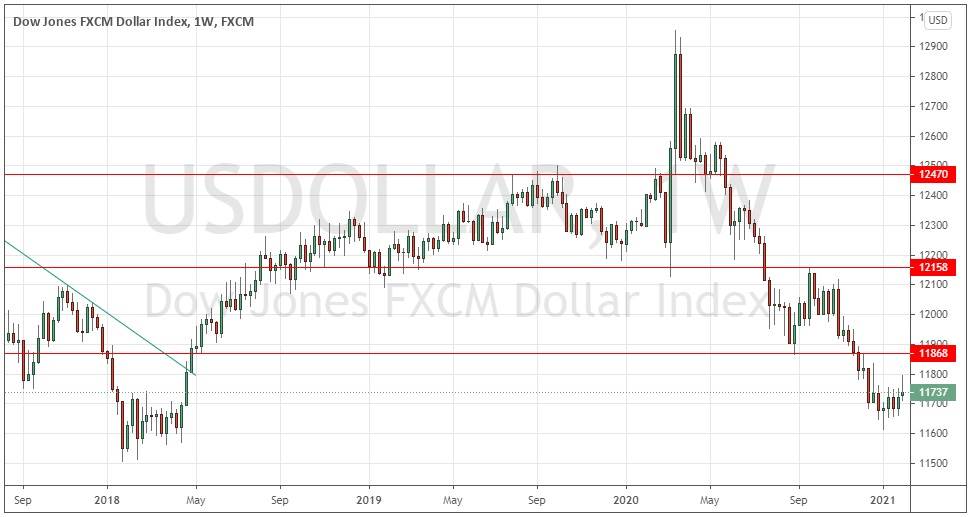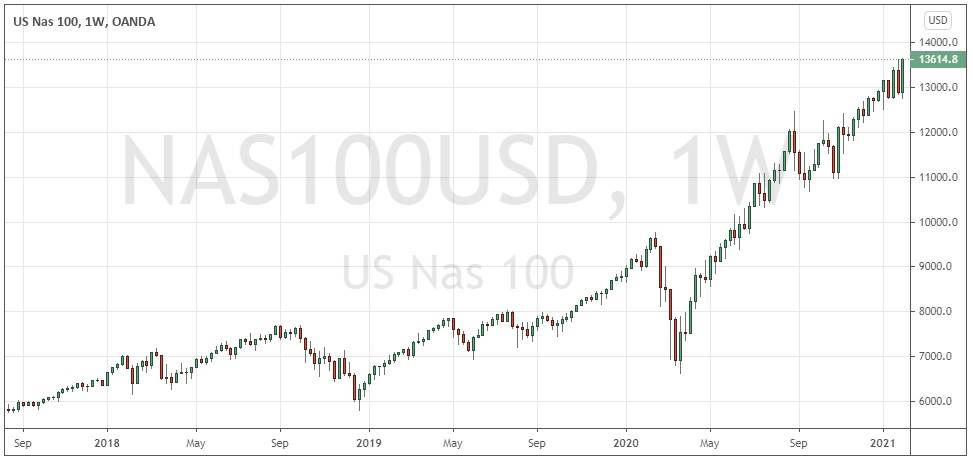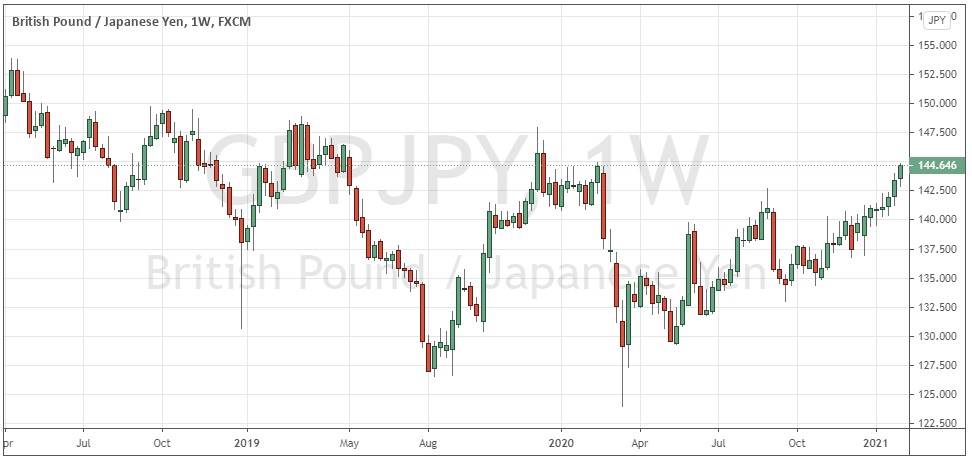The difference between success and failure in Forex trading is very likely to depend mostly upon which currency pairs you choose to trade each week and in which direction, and not on the exact trading methods you might use to determine trade entries and exits.
When starting the trading week, it is a good idea to look at the big picture of what is developing in the market as a whole and how such developments and affected by macro fundamentals and market sentiment.
It is a good time to be trading markets right now, as there are a few valid strong long-term trends in favor of stocks and riskier assets.
Big Picture 7th February 2021
In my previous piece last week, I saw the most attractive trade opportunities as looking for selective longs in the S&P 500 Index and the GBP/USD and USD/JPY currency pairs.
This was a great call, as there were opportunities for profitable buys according to my forecast in all three assets, if held until Friday’s close.
Last week’s Forex market saw the strongest rise in the relative value of the British pound and the strongest fall in the relative value of the euro. The long-term trend in the U.S. dollar is no longer clear-cut. We are instead seeing long-term weakness in the Japanese yen and long-term strength in the British pound and in the commodity currencies.
Fundamental Analysis & Market Sentiment
The headline takeaway is that we saw an increase in risk-on sentiment towards the end of last week and a flow into of capital into the U.S. Unusually, we saw U.S. stock market indices such as the S&P 500 index not only close the week at an all-time high, but the U.S. dollar strengthened as well simultaneously. This means that capital is flowing into the U.S. as data continues to show that the U.S. economy is improving. Last Friday’s data showed that average hourly earnings and new jobs were in positive territory, but not by as much as the consensus forecast had expected. However, the U.S. unemployment rate fell sharply, to only 6.3% instead of the 6.7% unemployment rate which had been expected. Nevertheless, this was due to declining labor force participation, which is bad news. This is helping to generate increased expectations of inflation in the U.S., which is turn bolsters the case that the Fed may end up tightening monetary policy in the medium term, and this helps lead to increasing strength in the USD.
Another major topic in the U.S. is the forthcoming stimulus package. President Biden reacted to Friday’s disappointing jobs data by remarking the danger was in the stimulus being too small not too large. He is now leaning to try to get a stimulus bill through Congress without any Republican support.
The Bank of England in its monthly policy release last week boosted the pound by appearing to pour cold water on the recently floated idea of negative interest rates. This saw the pound rise against the euro, yen, and U.S. dollar in line with long-term trends.
Canadian employment data was released last Friday and was very disappointing, with the economy shedding over 200K jobs as opposed to the 43K which had been expected.
Global stock markets rose firmly last week, with some indices ending the week at all-time weekly closing prices, notably the S&P 500, the NASDAQ 100, the Dow Jones, the Dax, and the Nikkei 225. The rise in technology stocks, represented by the NASDAQ 100, is especially strong and parabolic.
This week is likely to be dominated by U.S. inflation data and the ECB’s monthly Eurozone economic forecasts. It will be a relatively light week of scheduled data releases.
Last week saw the global number of confirmed new coronavirus cases and total deaths drop. However, numbers remain relatively high, and there are concerns that new mutations of the virus may be spreading which are more deadly and possibly resistant to the first generation of vaccines which are being rolled out. Many countries have recently imposed additional travel restrictions.
The strongest growth in new confirmed cases is happening in Albania, Bahrain, Belarus, Bulgaria, Czech Republic, Dominican Republic, France, Greece, Honduras, Hungary, Iran, Iraq, Italy, Jamaica, Jordan, Kuwait, Latvia, Mexico, Moldova, Monaco, Mongolia, Montenegro, Nigeria, North Macedonia, Poland, Qatar, Senegal, Serbia, Slovakia, Sweden, and Thailand.
Many countries have begun vaccination programs. Israel has vaccinated over 37% of its population (including 81% of over-60s) with a first dose of the Pfizer vaccine, and over 22% with a second and final dose. The U.A.E. is next with over 39 doses given per 100 people so far, followed by the U.K. at 17.
Technical Analysis
U.S. Dollar Index
The weekly price chart below shows that the U.S. Dollar Index printed a small, weakly bullish up candlestick last week which is in the shape of a pin candlestick. The consolidation of the past few weeks suggests that the dollar may not be able to fall much further despite the long-term bearish trend - the pace of this trend has slowed over recent weeks. Overall, next week’s price movement in the U.S. dollar looks unpredictable. For this reason, it will probably be wise to avoid trading the USD directly over the coming week.
NASDAQ 100 Index
The major U.S. technology index closed at an all-time high price on Friday after making its biggest weekly rise since November. These are bullish signs, as is the fact that the price closed very near its high. This index looks likely to rise further over the coming week, especially as global stock markets are generally bullish.
GBP/JPY
We saw the USD/JPY currency pair break to close at new 50-day highs towards the end of last week, which puts that currency pair in a new bullish trend. The GBP/USD currency pair is also in a slow but firm long-term bullish trend, albeit with deep dips. Therefore, trading this cross long stands out as a Forex trading option this week. It may be wise to wait for a dip and a bullish reversal from it on the daily chart of both currency pairs before entering a new long trade in the GBP/JPY cross. Last week this printed a firm bullish candlestick.
Bottom Line
I see the best likely opportunities in the financial markets this week as being long of the NASDAQ 100 Index and the GBP/JPY currency cross. A good conservative approach to these trades would be to wait for a down day followed by a higher close the next day before entering any long trade.



